World In Conflict
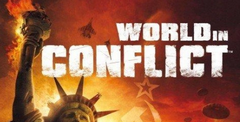
| a game by | Massive Entertainment |
| Platform: | PC (2007) |
| User Rating: | 9.6/10 - 5 votes |
| Rate this game: | |
| See also: | Best RTS Games |
Its Been Nearly a year since we brought you a first look at Massive Entertainment's World In Conflict. Their first game since Ground Control II, World In Conflict is set in the Cold War '80s. The Soviets, instead of going Perestroika, have invaded Europe and the US, leading to a three-fronted war where everyones got nukes. And everyone loves nukes.
We were told how the game was set to combine real-time strategy with the basic setup of a Counter-Strike match - starting players off in one corner of a map, letting them tool up with tanks and planes instead of flashbangs and AKs and then watching them run riot It's a difficult feat of imagination, and - presumably - equally difficult in execution. But these shots confirm one thing: it's going to feature some staggering scenes of destruction so delicious, they'll take the roof off your mouth and eat into your brain...
Ka-Boom!
Awesome it may be, but the nuke isn't to be used lightly - and in single-player, only when historically appropriate. Used intelligently in multiplayer, however, the weapon can provide a match-defining moment.
Into Battle
While the armament tool-up stylings might smell of Counter-Strike, a multiplayer sesh of LV/Calso reveals more than a little homage to BF. As your units swarm over the map you'll be keeping hold of command points - the more you dominate them, the more you win.
B-B-B-B-Build
Should you hold onto one of these command points for a good amount of time, Massive are currently toying with the idea of letting you truly dig in and build fortifications to help you fend off the enemy. Which, actually, wouldn't be a bad idea for Battlefield either.
Not Guildford, Then
Previously, Massive would only confirm a contemporary suburban setting' - but now they've told us that singleplayer campaign is set to cover a desperate war on American soil, Europe and eventually deep into Russia.
Masstech-Away
According to Massive, the potential first-person mode has a 50/50 chance of making it through, depending on how it fits the gameplay. The spiffy Masstech engine could cope with it with no hassles, mind.
Who Can Say?
You'll play as NATO, the US or the USSR (pictured is a US base). Will the forces be markedly different? Does the game live up to these gobsmacking screenshots? Will the damn thing work?
Blame It On The Weatherman
It looks gorgeous, but that's the only function the weather serves. Their experience with Ground Control 2 made Massive realize that changes in terrain and tactics attributable to the weather only confuse people.
Download World In Conflict

System requirements:
- PC compatible
- Operating systems: Windows 10/Windows 8/Windows 7/2000/Vista/WinXP
Game Reviews
Sweden's Great. Did you know that, in Sweden, they don't call it. The Carphone Warehouse? Oh no, the Swedes realised that they're not selling earphones, and they're not selling them in warehouses, so they call it The Phone House instead. They cut out the needless verbiage and hit you in the face with a sledgehammer of raw facts. Here's a house, it sells phones.
It's this very same no-nonsense attitude that you'll invariably find in World In Conflict. Here's a strategy game, it sells explosions. Here's a game that's invented a new way of sorting wheat from chaff, a game that appeals to strategy fans as a KFC boneless meal appeals to a chuckling fat man.
I don't want to make it sound like I've turned my back on the various elements of the RTS genre that involve basebuilding and meticulous unit production, because I haven't - but my god, what Massive have done with World In Conflict is so excitingly good that I really could. They've remodelled the RTS genre and yet have ended up with something that is, on the face of it, far more immediately captivating, far more strategic and far more fun to play. They've purified it, and now it sits on a happy middle-ground between those who hate and those who love the RTS genre.
Meatball Marinara
Before they show me the game, we sit down to a smorgasbord of Swedish pizzas (while the testers dig into a lesser, Burger King smorgasbord). After this, Massive are ready to show me some of their new multiplayer game modes. We've already sampled Domination mode, which works in a similar way to Battlefield's control point system. The more control points you capture and hold, the faster your team rolls giddily towards victory.
Each control point is made up of two or more adjacent areas you must sit your units in, and by choosing to sit tight in those areas you can fortify them with bunkers and anti-vehicle weaponry. Of course, sitting tight prevents you from pushing forward, so as with many choices in World In Conflict, communicating your intentions to your team-mates becomes paramount.
It's handy then, that World In Conflict's VoIP and chat system works not only in the game itself, but on every loading screen you encounter. "Nice loading screen!" you might shout to your internet buddy. "After this we should properly trounce the opposition! What say you to that?" And you know what? He would probably agree -such are the joys of talking through a loading screen.
When you come across who's managed to defend a position long enough to fortify it up to the eyeballs, the rock-paper-scissors analogy comes charging into action.
Role Up, Role Up
Each unit has its secret nemesis, its militaristic phobia, its dark strategic allergy. A building filled with dug-in infantry falls prey to long-range artillery controlled by whoever chooses the support role (each team is commanded by anything up to eight players, each choosing one of four roles). That long-range artillery is susceptible to tank attacks (controlled by the armour role), and similarly, those tanks will be wasted by a quick-thinking heavy helicopter (air role, and the final one is the infantry role, if you haven't already realised).
The role you choose determines which units you can purchase (although it's possible to buy units from other roles at a premium), and your purchases are airdropped in at regular intervals. You're only ever commanding a small clutch of units too, and that means your attention is never spread too thinly.
It's a gradual learning curve, but one that never lets you slip. Shy newcomers and men with silly girly voices can cooperate fully in multiplayer without ever needing to utter a word, thanks to the ability to pin notes to the battlefield and give pre-vocalised orders with a handy rose menu. Besides, just watching what your fellow players do with their units will tip bucketloads of strategic knowledge down your newbie gullet. That's especially true when you're me, and you're playing with and against lead designer Magnus 'Soundboy' Jansen and some Whopper-fuelled playtesters. Playing, for the most part, on those new multiplayer modes I mentioned earlier.
Pullinc Power
The first of these multiplayer modes is Tug Of War, in which a line of command points splits the playing ground in two. Massive boot up a map based in the war-ravaged Soviet countryside, a featureless sprawl of toasted forest. On either side of this map, opposing armies attempt to simultaneously control every point along the line, something that's easier screamed down a microphone than done.
Over the course of the conflict TA points are acquired and used to call in specialised attacks such as extra artillery or airstrikes. Every player accumulates these points, and can choose to stockpile them or hand them over to somebody else - an act that allows the recipient of such goodwill to call in the one thing World In Conflict is becoming synonymous with: the tactical nuke.
Enemy units are only visible if they're in sight of one of your own (or your team-mate's) units, meaning recon is invaluable when deciding where to drop the big one. But in Tug Of War, it's possible to see who's controlling any given point on the front line, and if it's Inemy-controlled it means there are enemy units at that location.
So, hold a control point too long in this mode and you receive a harsh nuclear slap in the face - only a co-ordinated team capable of swiftly pturing multiple locations will succeed here, and once the line is completely 'Controlled, it jumps forward, encroaching on the opposing team's territory. Then the tug of war begins again.
Aggravated Assault
After a skin-of-the-teetli defeat, we love on to another game mode, ssault, which will be immediately miliar if you've played Unreal wmament. In it, a series of objectives are presented to the attacking team, who have a certain amount of time in which to move through the map, Dmpleting these objectives. The Blending team must simply prevent the ttackers from doing all of that, and When the clock runs down, the teams witch roles. The defending team then have to try to barricade themselves in Streets they'd previously bombed the crap out of, and might find a single lOnderous moment in which to allow pangs of regret to flit through their minds. See? World In Conflict is carrying a message: don't break stuff you might have to hide inside of later on. Oh, and that war is bad.
The particular map we play Assault on sees us working our way uphill through a sunny European town, capturing churches and streets with a wonderfully carefree attitude towards collateral damage. As we meet a solid wall of defence, we're forced to roll out bigger and bigger weapons, working our way up through tank busters, daisy cutters, long-range artillery and fuel air bombs. In time, everything on the hill is reduced to a fine smouldering powder, and the sky is turned a dark, ominous brown. Compare that to good old Red Alert 2, whose nukes simply deleted every building and left a glowing green patch that made soldiers bleed from their pores. Proper damage modelling has come a long way, and it looks spectacular.
Inner Conflict
Before I wave goodbye to Massive, they briefly allow me to run through a singleplayer level, revealing slightly more of World In Conflict's 'Russians invade the USA' alternate-reality timeline. It begins in an American town still a little dizzy having been bombed, with a handful of military-types, each with 'hang-ups'. It then heads back in time to the fall of Europe and the struggles of NATO, where each of the characters originally met and explanations for their current attitudes to one another are provided.
It's clever storytelling, and nice narrative touches such as an army general using a tourist guide for a small American town as an impromptu strategic map assure you that some thought went into the single-player campaigns.
And I've mentioned all this without once blubbing about the simply astounding camera - the ability to zoom down to eye-level and look up at the sky or survey the fiery battlefield all the way out to the horizon. Oh, and how if you zoom in on units you can hear their radio chatter. And how in single-player, if you go after an objective your Al team-mate has been assigned to, he'll have a go at you for showing off, Starwing-style.
The fully 3D mega-map too, which has had the wind taken out of it by Supreme Commander's own 3D battlefield map, has its own charm, allowing you to see everything at once, in real-time, like some malevolent god or high-flying seagull. Even the bugs in the alpha code are pleasing, with the increasingly prevalent smoke from explosions gradually rendering the entire battlefield unviewable through a thick and hilarious smog.
Purists might scoff at World In Conflict's arcade-like attitude to our humble RTS genre, but they'd be wrong to do so. It's going to be awesome - a genuinely new and perhaps revolutionary take on modern combat strategy. And you can quote me on that come autumn.
The Year Is 1989. The antipodean warblinqs of Jason Donovan and Kylie Minoque drift from a nearby radio, while your dancinq flower and sunqlasses-wearinq Coke cans wobble about like Oliver Reed after a heavy nic|ht. Meanwhile, somewhere in the distance, a faint noise is heard.
All of a sudden, sonic booms break the stillness, followed by the screechinq sound of fiqhter jet enqines. A closer boom rattles the shelves and a descendinq hiqh-pitched tone indicates an incominq missile. Wonderinq what's qoinq on, you stumble outside More qaspinq in shock. Parachutes fill the air and in the distance, Russian tanks rumble over countryside. An explosion hits a nearby house - one tiling's for sure - the Cold War hasn't ended; it's only just bequn.
That's the setting for World In Conflict and it's a huge departure from Massive's normal sphere of storytelling, namely sci-fi and its world of intergalactic plottings and alien races intent on human destruction. Russia, on the brink of economic ruin, has decided to go all-out and invade Western Europe before titrnincj their attention to America. But, as Massive's president Martin Walfisz is keen to point out, they're not just cobblinq toqether any load of old rubbish to explain why the Cold War has qone so differently this time round.
The Name's Bond, Larry Bond
No, to aid in the creation of a believable backstory, they've employed the skills of Larry Bond, who, alonqside Tom Clancy, penned Red Storm Rising, a massively successful book on the subject of a hypothetical conflict between NATO and the Warsaw Pact. Bond's skills are beinq used to flesh out the scene and explain just why Russia's decided to at tack at id exactly where the front lines will lie.
Walfisz also stresses tli.it they want to keep the sitiqle-player campaiqn "accessible and einotioml", addinq th.it the real stars of the show are the characters. Massive and keen to put an emphasis on you feelinq part of a biqqer team - so after the Soviets have attacked Seattle, you take control of a chap called Parker, who'll be takinq commands from Colonel Sawyer.
No, I Know Best...
Reelinq from the sheer boldness of the attacks, and surely with a nod or two to Pearl Harbor (the List military assault on the USA), in-qame cut-scenes show the characters arqiliikj over plans, while cracks soon start to show in their relationships - adding a definite personal dimension to an otherwise detached RTS conflict. However, I haven't come all the way to Sweden just to listen to what Massive have planned. So, after a swift demonstration, we're led to a bank of computers where I get my hands on 'The Battle Of Pine Valley', the third level in the game.
The second the loading bar disappears, the view provided by the Masstech engine is incredible. Unusually for a game of this genre, the camera allows for a view of the horizon and the effect is breathtaking. Positioned at one end of the sleepy town, the engine allows for a clear view over the detailed buildings, into the hazy sea lapping at the sandy shores beyond. Donut shops nestle next to diners, giving an all-American feel to the little town.
Street Fighting
It's hardly the battle-ravaged scene you'd expect from the genre, but this is just the beginning. Massive have carefully chosen their environments to enable you to easily relate to them, so fortjet carefully laid-out military liases - here, you can to see battles raging around shopping centres and parking lots.
My first objective, eliminating a sniper nestled in a nearby tower, gives a good demonstration of some of the special abilities available. My APC vehicle draws near to the base before unloading its troops, who use the cover of a neatly chucked smoke grenade to dash across the unprotected gap, plant some explosives at the base of the tower and rush back to the armoured security of the APC. A few seconds later, the explosives detonate and the tower crumbles, falling to one side before smashing into the ground and eliminating our sniper problem. It's also the first example of the destructible scenery I bear witness to, with every building being a valid target for swift destruction.
Back Up Solutions
Forgoing the traditional RTS habit of resource-collecting, this achievement swells my collection of credits, and with my new-found wealth, I purchase reinforcements to aid me in my next task: taking control of a petrol station. A few moments later, the transport aircraft swoops low over the camera and airdrops several large boxes of goodies via parachute. With my forces boosted by a few friendly tanks and a jeep or two, the convoy heads off.
Two circular perimeter points' surround the petrol station. Currently flagged up in red, these indicate that the enemy has control of the area - but after swiftly knocking out nearby forces and moving my own gang into the circle, I see a friendly green instead. Once I've taken the other point, control of the petrol station command point is mine and my forces instantly start constructing fortifications - in this case machine-gun nests. With these built and my units dug in, a wave of enemy forces sent to try and recapture the petrol station are swiftly dispatched.
Once this is accomplished, orders start coming thick and fast. Next, I move downtown, nab several other command points and begin the push towards the seafront. By now it's become more than apparent that I'm far from alone on the map. Friendly allied forces are fighting furiously against enemy units in other sections of the town, adding to the feeling that I'm part of a much larger conflict After one big push towards the beach (replete with amazing water), allied reinforcements arrive. However, it's not long before trouble looms again and I'm called to reinforce a local shopping centre, which is handy since I need to pick up a doorstop from Robert Dyas anyway...
Dropping The Nuke
By this point I'm gaining tactical aid points - which is where thiilgs start to get really interesting. Gat boring these babies gives you access to the tactical aid system - a scries of frontline help options that range from concentrated artillery barrages to anti-tank A10 Warthog strikes and even the big daddy of back-ups the much-touted nuclear strike. And so an enclave of enemies are swiftly to dust by my freshly summoned artillery, and my units liappily swarm over the remains of the previously intact and heavily occupied TV station.
A few command points later, and one hefty struggle in which I valiantly manage to survive with only a liandful of soldiers, the culmination of the mission comes in defending the town sguarc. It's a chaotic few minutes, with enemy troops pouring in from direct ions and reguiring some deft navigation of the map to keep an eye on all units and entrances, helped hy the inclusion of what Massive are calling their mega-map (showing the entire level of allied and enemy unit positions, updated in real-time). Eventually I win and the level finally finishes, with the sudden abatement of the non-stop action leaving me happily drained.
No Tin Team
Next, I become a card-carrying member of the communists and give online a try. Here, Massive are really aiming for something unique. Liberally borrowing features from online shooters such as Counter-Strike and Battlefield, the combatants in WIC's multiplayer siqn up to one of two teams, with up to eight players on each side.
Once a side has been determined, yon choose your role from four options - air (attack and transport helicopters), armour (tanks), infantry or support (artillery and anti-aircraft). Once this has been selected and the battle has commenced, you're assigned a certain i of credits to purchase appropriate units - perhaps also buying a few units from other player roles at a higher cost. As in Battlefield games, control of the map is defined by holding command points; take them all and win outi iglit.
Need A Drink!
In stark contrast to most online RTS games, the emphasis here is clearly on teamwork. With each unit having its own particular vulnerabilities and reguiring a completely different playing style, you'll clearly need the back-up of your team-mates. Luckily, Massive have built in a few systems to enable optimum communication such as voicesupport and an intuitive reguest system to let your team-mates know when you need help, featuring short commands such as 'Need air support!' that will he instantly sent to your allies along with your position.
Destroying enemy units or command points, meanwhile, tots up those tactical aid points and it's never loncj into the game th.it someone releases the first nnke. Everyone's screens fade to white for 1 second and for just a moment, action ceases as everybody pans around, trying to jet a better look at the amazing mushroom cloud billowing out from ground zero.
Elsewhere, other tactical aids continue their assault, with fiqhter jets about in the air, deliverinq napalm strikes in strips that clear the scenery of units and veqetation alike. Should you qet bored with your role, you can always chanqe it mid-qame, a la Battlefield once aqain. With a decent team, the multiplayer side of World In Conflict could offer amazinq potential, with an emphasis on teamwork that's never been seen before in the RTS realm. Put in the hands of an orqanised bunch of mates or a capable clan, the limits for tactical play are almost endless.
World In Harmony
Considering that World In Conflict is still only at pro-alpha stage, things are looking mighty impressive. With one of, if not the most stunning RTS engine we've seen to date, a solid single-player experience and multiplayer th.it feels genuinely exciting and innovative, Massive are really onto something special here. With plenty of love and care over the rest of the year, Massive could well have a contender for the RTS of 2007 on their hands.
I Cant Lie; the notion of sitting in a room having a conference call with some men from Sweden to discuss their new military-themed RTS doesn't ignite the fires of enthusiasm deep inside my belly. Sure, it sparks a flicker of excitement - just look at these proud guns lined up, with little men running hither and thither and beautifully realistic trees around them - that's glorious attention to detail. Despite this though, my froth glands are distinctly inactive.
Of course, at this point all we know about World In Conflict is that it's a strategy title being developed by Massive Entertainment, the same guys who made Ground Control. We also know it's set in a fictional Cold War conflict based partly in US suburbia. Armed with these two flaccid pieces of knowledge, I approach a phone with Martin Walfisz, CEO and founder of Massive, on the other end and speak my questions into it. The answers I receive are set to change my life, forever.
And Ever
Alright, so maybe that's a bit dramatic, but coming from something as far-out as the sci-fi strategy Ground Control to the semi-realistic setting of World In Conflict is quite a leap. Not only that, but I'd soon come to learn that the crux of World In Conflict comes not in its Cold War setting, nor in its highly-detailed graphics engine. No, the core of World In Conflict is a multiplayer concept never before attempted in an RTS. Imagine the multiplayer rules of say, Counter-Strike or Battlefield, apply them to a strategy game and you'll begin to understand where Massive is trying to go with this. If you're waiting for the proverbial twist or perhaps a metaphorical hook, or maybe a mixture of the two in the form of some intangible, twistable hook thing, you can relax now.
Guns Up
"The basic core mechanic of World In Conflict, keeping in mind that this is a realtime strategy game, borrows heavily from first-person shooter games like Counter-Strike and Battlefield," begins Walfisz.
"In multiplayer, each player starts on one of two teams, just like you do in Counter-Strike, and each team has a deployment zone at one end of the map. When you choose a team, you choose a role such as commanding heavy armour, leading infantry or perhaps focusing on air power. Once you've picked your role you then buy units, your weapons of warfare basically. And once they're deployed in your deployment zone, let's say five tank units and three infantry units, they're yours to command and move around the map."
That'll be the Counter-Strike aspect Just like in Valve's shooter, World In Conflict's multiplayer consists of connecting to a server, choosing a team, choosing a role and then buying your equipment before you actually play. What this means is that teamplay will be paramount to having an enjoyable game, as just like in real war, a divided army will fall.
Of course, for hermit types who'd rather wage their own wars and not have to depend on other players to co-operate effectively, Massive plans to include standard lvl and 2v2 games, but when it's possible to crank the player count up to frenetic 8v8 games, something no modern strategy game has offered before, we don't see why you'd want it any other way.
Massive is also promising multiplayer gameplay which allows people to drop in and out without being at a disadvantage, again mimicking the online shooter ethos, as well as foregoing the usual RTS grinds of resource gathering and base-building. "It's still a strategy game," states Walfisz firmly. "However, it's unlike all the traditional RTS games which have gone before, where first you must harvest your resources and construct your buildings, then construct your units, and after half an hour go out and have a battle. Here, the focus is on always being in the heat of the battle. It has the accessibility that a lot of first-person shooters have."
So without resources and bases, what are we left to play with? "The point of each map is to take over what we call command points," Walfisz continues. "These are strategically important positions on the map. Hie team who controls the most command points will have domination of the map, and will influence a domination bar which moves in favour of the team controlling the map currently. Once the domination bar is fully moved to the left or to the right, one of the teams will win.
"Each map also has a time limit, say 20-minutes, so if after 20-minutes there's no clear winner, then the team who has most domination on the domination bar wins the map." That's essentially Battlefield's ticket system wearing a wig and a dress if you hadn't noticed, and we're more than happy to see that method being adapted to a different genre.
Get Real
World In Conflict's setting is also in stark contrast to the kind of themes Massive has worked with previously. "We've been working on sci-fi stuff since 1997 and so we decided to explore another type of setting," explains Walfisz. "We love sci-fi stuff as much as we love fantasy stuff, but one thing we realised during the years is that it's always great for gamers to recognise new settings."
Massive's previous title, Ground Control II, had a great sense of style, with its sci-fi setting and some highly atmospheric locations. It was also a great game to boot, landing a PC award and 84 per cent - another reason to look forward to World In Conflict.
"With this new game, one of the key things was to make it open to all," adds Walfisz. "To do that we realised that the setting should also be really accessible and understandable from the beginning - basically, World In Conflict is something that people can recognise right away. That's why we chose the contemporary suburban setting."
I nod at the speakerphone in a pointless gesture of agreement - the sprawling neighbourhoods and parklands of 1989 America really are an original location for an RTS game. But why the Cold War? And what's going on?
Walfisz continues: "We looked at all these other historic games and then looked at what our interests and the team's interests are. We felt the Cold War era really hadn't been explored in strategy games before. Also, we're dealing with modern-day units but not today's units, so we have some historical elements. The more we thought about it, the more we realised it's a very interesting, untapped era. Even though it's a fictional scenario, it's not an outrageous scenario, there's no humour or irony in the setting."
They Blew It Up
Besides its radical new approach to online strategy, Massive is also touting its entirely destructible environments. Lead designer Magnus 'Soundboy' Jansen explains: "Everything is dynamic and destructible - if you blow up building blocks, houses and forests, it actually updates the path-finding for the units.
So you can napalm a strip of forest and go through there with your tanks. You can blow up a bridge and cut the enemy off, it's very dynamic and everything's destructible. It's not just for show, it actually affects gameplay.
"We enhanced the destruction too, in fhat when all the massive bombardment takes place everything changes. When all the forests are burned down, it's charred and black, the clouds turn dark and everything's gloomy. So it can turn from happy suburbia to post-apocalyptic nightmare in just a few minutes."
Back To Bedlam?
Already, it's becoming apparent that World In Conflict will be a title to look out for, a guinea pig for a new mode of multiplayer strategy gaming. And while it certainly is original, it remains to be seen how well it works in practice. Sixteen players on a single RTS map? There's potential for mindless bedlam here if Massive doesn't get it right.
Jansen intervenes: "You can play a normal deathmatch and treat it like Counter-Strike where people don't really work as a team. But the game really shines when you start co-operating, communicating and working together. That's the main feature, we're aiming for bigger teamplay games and teamplay is at the core - it's been there from the very beginning. We have other features which are unique and amazing like the cool destruction, but the teamplay is definitely the most profound thing about World In Conflict."
Consider our belly-enthusiasm kindled, stoked and blazing then. It's a bit like that episode of the A-Team where BA Baracus promised Murdoch he wouldn't call him a fool any more, and then right at the end of the episode, BA Baracus called Murdoch a fool. Except we're Murdoch and BA Baracus is Massive and the word 'fool' is the concept of a strongly team-based and action-orientated multiplayer strategy game.
In short, it's a pleasant surprise to see World In Conflict put a spin on the tired multiplayer concepts of RTS games in general, and we look forward to seeing whether Massive can make it sink or swim.
Some help please
When in doubt, it's time to call in the heavies...
Just like in Massive's previous title Ground Control, you can call in off-screen support and reinforcements as long as you meet certain requirements. Lead designer Magnus Jansen tells us all about World In Conflict's Tactical Aid. "You can call in Tactical Aid, like an ace up your sleeve, by earning TA points. We have airstrikes, tankbusters and all sorts of minor and major weapons of mass destruction that you can call in at will. You can drop paratroopers behind enemy lines and other units too. Based on how good you are on the team, you're individually awarded these TA points, like in the Ground Control games. If you repair a lot, or support cr destroy a lot of enemies, you get TA points."
We like the sound of that, especially the weapons of mass destruction bit. Couple the fact that everything on a map can be destroyed with the possib lity of being able to drop a nuclear bomb and we start to get very excited indeed.
Single and looking
Are you lonesome tonight?
Massive Entertainment really didn't have a whole lot to say about the single-player aspect of World In Conflict right row. What we do know is that there will be some sort of campaign in there, featuring armies 'from around the globe' (read into that what you will), and weapons which were available at the end of the '80s, like the M1A1 Abraham tank and Apache helicopters. As lead designer Magnus Jansen put it: "We haven't taken any liberties with reality, it's the full arsenal of the existing superpowers at that time - no more, no less."
That's not to say that the single-player side of things is being neglected like some dirty orphan: Massive has an extremely high-profile writer working on its script and an alternative Cold War reality setting, rife with potential for political subterfuge and cunning plot twists. Well surely get more single-player details soon, but for now Massive is firmly backing its multiplayer content first and foremost.
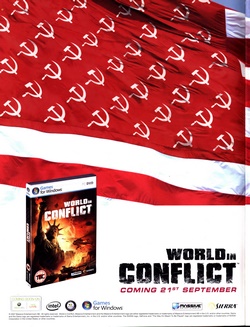
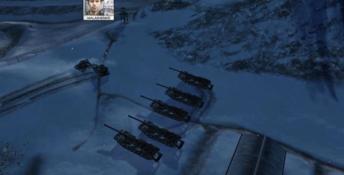
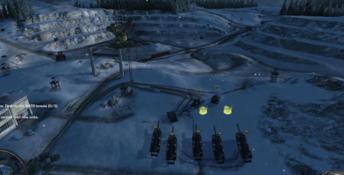
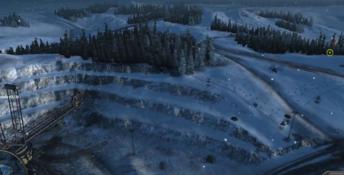

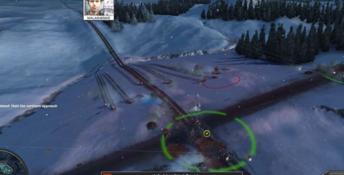
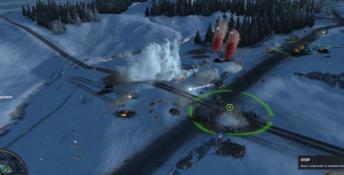
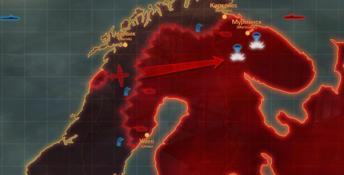
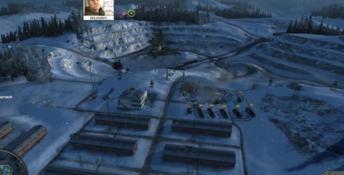

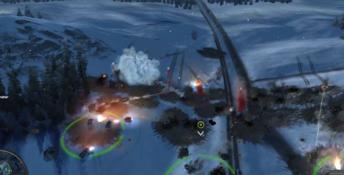
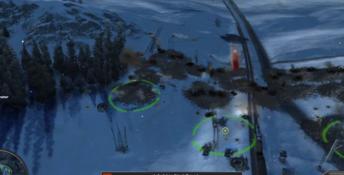
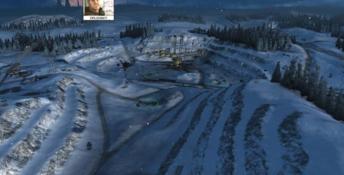
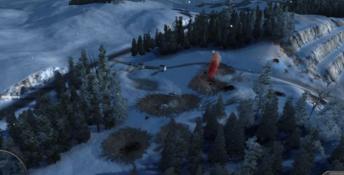
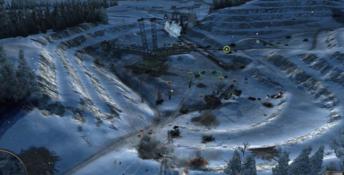

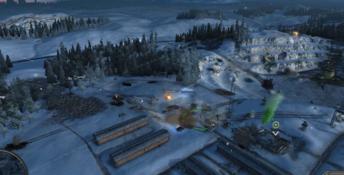
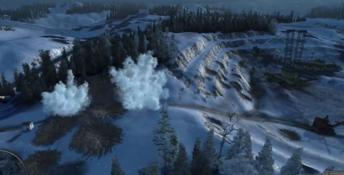

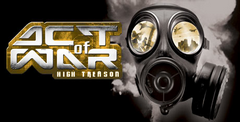 Act of War: High Treason
Act of War: High Treason
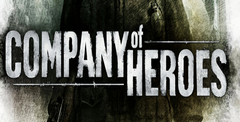 Company of Heroes
Company of Heroes
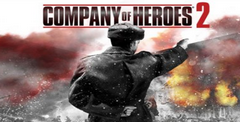 Company of Heroes 2
Company of Heroes 2
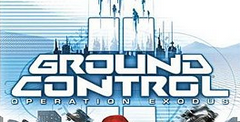 Ground Control II: Operation Exodus
Ground Control II: Operation Exodus
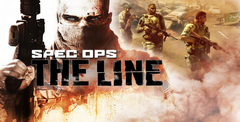 Spec Ops: The Line
Spec Ops: The Line
 Supreme Commander 2
Supreme Commander 2
 Tom Clancy's The Division
Tom Clancy's The Division
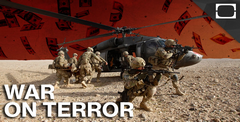 War On Terror
War On Terror